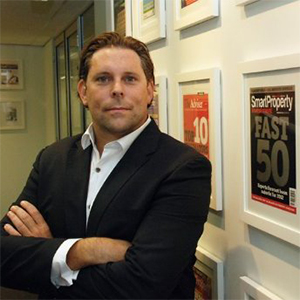Cash flow is king
In this month's column, I'll detail how we're balancing our need for properties with good cash flow with our desire for properties which offer up instant equity.

I finished up last month’s column discussing our purchase in Glenroy, which is a northern suburb of Melbourne. The overall theme of the article was around flexibility – and the ability to capitalise on a buying opportunity, even if it might not exactly meet your current investment strategy.
To continue reading the rest of this article, please log in.
Create free account to get unlimited news articles and more!
For us, the Glenroy purchase was an equity play. The property was purchased well under market value, and it was an opportunity we couldn’t miss.
In that article I spoke about our current buying strategy and the need to add more cash-flow positive properties to underpin a number of lower yielding properties we have in our portfolio.
The Glenroy purchase does not deliver the rental returns that our current strategy dictates – with a return of around 5.2 per cent – however, we did not want to miss out on an immediate $53,000 in equity on a $322,000 purchase price.
We know the property was purchased so far under market value because we undertook a bank valuation prior to purchase.
We’ll sit on this property, and over time it will become a better performer in terms of yield, however the equity sitting in that property will come in handy to help fund a purchase in the future – and to allow us to continue to grow our portfolio.
At only three years old, there is a depreciation component to this purchase – which I planned to write about in this month’s column. However I wanted to shift focus to our most recent purchase, and how it fits into our overall buying objectives. I’ll leave the follow up on our Glenroy purchase – and how it’s tracking – for another time.
Cash conscious
We’ve got a great performing portfolio with substantial equity. Yet one area of improvement is its cash position and the need to operate it at a neutral, or if possible, at a positive position.
Our last few purchases have helped add some good equity to our portfolio, yet as we’ve re-financed our properties to help underwrite additional purchases it’s placed pressure on our cash-flow position considering the increased mortgages that need servicing.
While increasing rents is an option to help alleviate this, it’s not an immediate proposition and it will take time to slowly increase yields in line with market conditions.
It’s important to remember that while refinancing offers cash to finance additional properties, it also impacts your ability to service your portfolio. Refinancing means higher mortgage repayments, and unless you have great yielding properties to service this increase, or surplus cash to help sustain your portfolio, you may find yourself in trouble.
It’s a balancing act that requires planning, modelling as well as constant awareness. If you’re unsure of your ability to take on additional debt through refinancing – and how it might alter your investor profile – speak with your mortgage broker. They’ll be able to run through all the different variables for you.
Considering our goal to increase the cash-flow position of our portfolio, we’re seeking higher yielding properties at the moment, and our most recent purchase is firmly focused on this. We have a pretty diversified portfolio now, with properties in Sydney, Brisbane and Melbourne.
We also have exposure in the Central Coast market of NSW.
Our latest property purchase adds another level of diversification – the regional area of Wollongong.
Wollongong is an established coastal city around 100 kilometres south of Sydney. Positioned within the Illawarra region of New South Wales, it has a population nearing 300,000 and is the third largest city in New South Wales after Sydney and Newcastle.
The area’s beaches stretch from Stanwell Park at the foot of the National Park to Windang, offering many recreational activities and a quality of life the area is famous for. But Wollongong is also noted for its heavy industry and has a long history of coal mining.
Much of the area’s infrastructure is geared towards the heavy manufacturing industries, with a large working port and associated mining assets generating much of the area’s employment opportunities.
Wollongong’s Port – Port Kembla – is now the single largest concentration of heavy industry in Australia which includes steelworks, a fertiliser plant, electrolytic smelter, grain shipping terminal and an industrial gases manufacturing plant.
The area has experienced steady population growth over the years and has a multicultural atmosphere; however land is becoming restricted in more established areas considering the narrow belt of land the area occupies between the Illawarra escarpment and the sea.
Areas surrounding Dapto offer the greatest prospects for further population growth, as do developments around Albion Park, Shell Cove and Kiama.
Well-resourced by localised transport links including road, rail, bus and air, there’s good gateway infrastructure to connect the Wollongong region to Sydney – with many choosing to live in the area and commute to Sydney each day.
The lifestyle offered by the area will continue to attract families as well as professionals, however it is local opportunities, in particular around industry and associated support sectors, which will sustain growth over time and put positive pressure on property prices plus rental yields.
While in essence a regional city, the level of industry diversification is a factor that attracted us to the area, as well as the sustained population growth and opportunities for employment within the heavy industries and elsewhere.
With a thriving retail sector plus employment prospects in health, government and tertiary education, it’s an area that’s well set for a sustainable future – and an area in which we wanted to invest.
But like all areas, there are markets within markets, and there are areas of Wollongong that are well worth avoiding.
Pick of the bunch
Like all investment opportunities, a number of factors need to be considered when locating an area that will deliver returns over time as well offer strong capital growth prospects.
For us, by investing in Wollongong we wanted to keep consistent with our overall strategy of identifying affordable properties in the $250,000–$350,000 range that offer the potential for adding value.
Moreover, central to our strategy is to purchase these properties under market value. As I mentioned earlier, an added focus to our buying strategy in the Wollongong area was to find a property that delivered good rental yields to give us a better cash position.
These were the parameters that dictated our purchase in Wollongong, and the property we found definitely ticks all these boxes.
The area has experienced steady population growth over the years and land is becoming more restricted
Located in the established suburb of Port Kembla, our most recent purchase offers numerous opportunities; most significantly it’s an established duplex that offers multiple rental streams.
Purchased for $320,000, we secured the property approximately $30,000 under the asking price. (Note: the actual contract price is $325,000 however through negotiation another $5,000 will be deducted from the price at the time of settlement.)
Notwithstanding this, the property had massive potential for adding value. The term ‘ugly duckling’ really doesn’t do this property justice. It’s an eyesore, however with our experience in renovations I’m not concerned about our ability to elevate this property and turn it into a great performer.
Traditionally rented at around $250 per week per two-bedroom unit, as it sits right now the combined property will deliver a yield in excess of eight per cent, but I’m confident we can boost rental returns and the overall capital value of this property.
Port Kembla is an interesting suburb of Wollongong. Often overlooked because of the close proximity of the port as well as the infamous Port Kembla smokestack, the suburb is going through a period of gentrification.
The smokestack fell to demolishers earlier this year, and that marked a turning point in the suburb and was a milestone in its ongoing gentrification.
The suburb is still deeply linked to the history of the port and many of the families that have worked in the port for generations still live in the area. It offers a real community feel, and the locals are passionate about their suburb.
It also has what is arguably one of the best beaches on the south coast, if not all of New South Wales. Port Kembla beach has a great Olympic Pool at the north end, with good surf, fishing, and swimming along its stretch. A beautiful beach, it complements key infrastructure, including a local West¬field, train station, hospital as well as other essential amenities.
I’m very bullish about this property – and not only the opportunities presented by the property for renovation and adding value, but the long-term prospects for capital growth as the area develops.
Port Kembla is a hidden gem and I’d imagine as more and more Sydneysiders become aware of the suburb, more will chose to have holiday homes in the area.
The actual buying process of this property has been an interesting one, with our buyer’s agent the Right Property Group working closely with us to identify this property as well as secure it via private treaty. It’s a good story which you can read about here.



